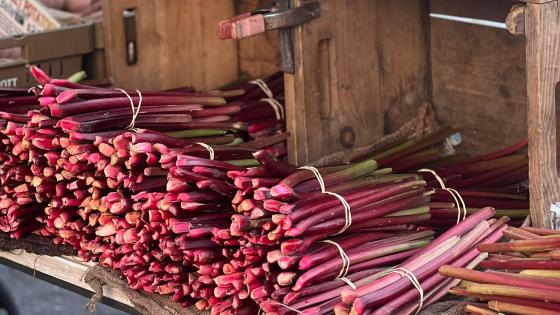
Rhubarb
Rhubarb
Rhubarb (Rheum rhabarbarum) is a winter-hardy herbaceous perennial growth for its edible leaf stalks. The tart-flavored stalks are most commonly used in pies, often in combination with strawberries for added sweetness. The leaves themselves are not eaten, either cooked or raw, as they contain toxic levels of oxalic acid.
Key Requirements
| Land | Low |
| Labor | Medium |
| Capital | Medium to High |
Take the HortBizQuiz to see how much Land, Labor, and Capital you have for your operation.
Markets
- Direct to Consumer
- Farmer's Market
- On-Farm Stands
- CSA
- Restaurants
- Local Grocery
Pests & Disease
Rhubarb leaf spots/blights can occur. Crown rot will be a serious problem in sites that do not have excellent soil drainage. Stalk borer and rhubarb curculio are the main insect pests that are encountered.
Costs and returns are presented as estimates. They will vary based on your farm and markets.
Costs and returns are presented as estimates. They will vary based on your farm and markets.
Challenges
- Can take two to three years for a small-scale rhubarb operation to generate positive returns.
- The market is limited, growers should begin small.
Opportunities
- Can be included in value-added products
- Can be harvested early when many fruits and vegetables are not ripe yet.